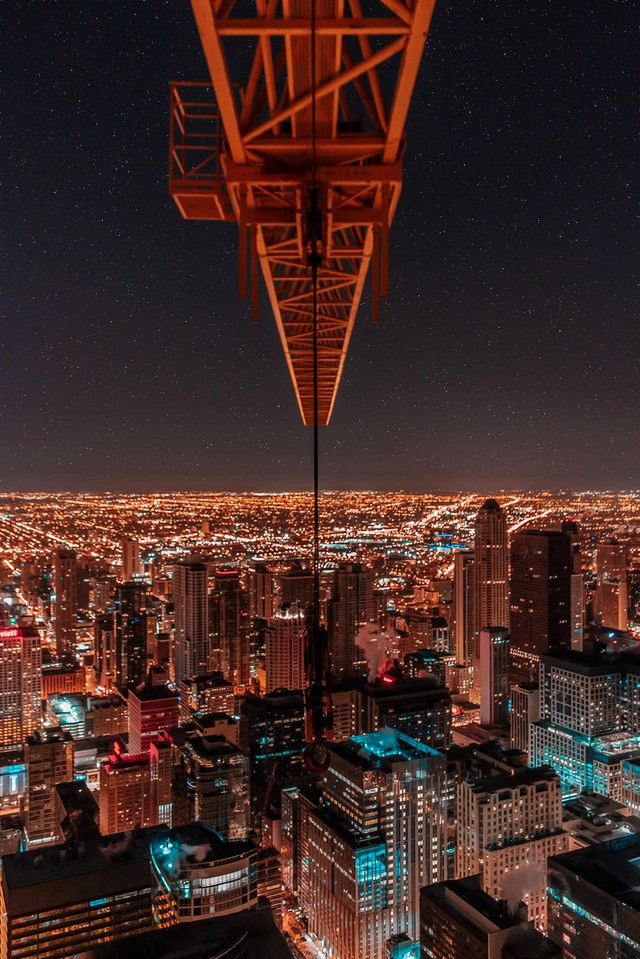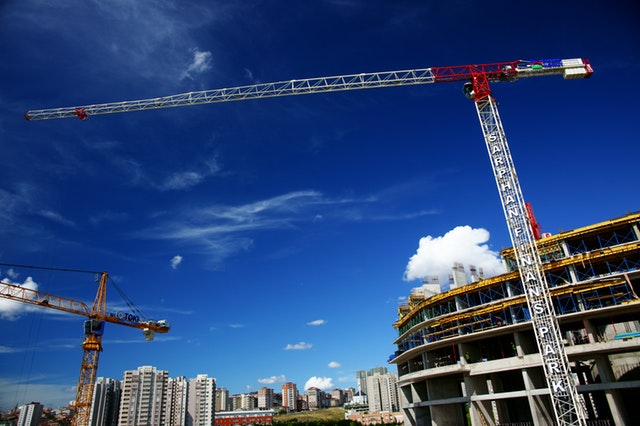The horizon of one city will possibly take in at least a couple of tower cranes, which are in the middle of the biggest parts of gear utilized in construction progresses. Building businesses use tower cranes to haul up weighty supplies such as steel and concrete. Big machines such as acetylene torches, motors and generators are also conveyed operating tower cranes.
Article Sponsored By Frisco Fence Staining
Given that tower cranes are small paralleled with multistory constructions, their elevating capability can certainly be misjudged coming from their facade. Some of the obvious questions are: how can the tower crane stand without tipping over? How is it capable of lifting so much weight? Does the crane become taller along with the building?

Parts of a Tower Crane
Tower cranes, on the whole, are constituted by three key parts: the base, the mast or tower, and the swinging piece. They are defined in the following way:
- Base: The base is the central foundation of the crane. It is linked to a big concrete groundwork that bears the complete weight.
- Mast or Tower: The mast is linked to the base, and it is the reinforcing arrangement that provides the crane its altitude. The mast has a big triangulated matrix assembly, which offers the crane its force.
- Swinging Piece: The swinging piece comprises an apparatus and engine,
connected to the peak of the mast, permitting the crane to switch by its alignment.
In sequence, the swinging piece comprises of three parts:
- Jib or working arm: A horizontal component that bears the weight, with a trolley that runs alongside its extent to transport the consignment in and out.
- Machinery arm: A smaller horizontal component that grips the load-lifting motor. It also encompasses automatic panels, the cable container, and concrete counterbalances to preserve equilibrium.
- Operator’s cabin: Comprises of the space in which the machinist conducts all the tasks of the crane.
Specifications
Tower cranes come in different models and from different manufacturers, so their specifications might change depending on these factors but overall their standard specifications are:
- Maximum unsupported height: 265 feet or 80 meters.
- Maximum reach: 230 feet or 70 meters.
- Maximum lifting power: 19.8 tons or 18 metric tons.
- Counterbalances: 20 tons or 16.3 metric tons.

Support System
There are numerous components that influence to the tower crane’s steadiness. The concrete pad is a concrete groundwork prepared by the building company quite a few weeks previous to the crane’s influx. The pad usually comes in a size of 30x30x4 feet (10x10x1.3 meters), with a mass of about 400.000 pounds. Big anchor bolts are profoundly implanted in the concrete pad, and these features back up the base of the crane.
Generally, the stability of the tower cranes relies on their assembling process, capable installers bring together the jib and the machinery section, and these elements are then located on the mast, which is merely 40 feet tall at first. Once this gathering is accomplished, the counterbalances are positioned by a mobile crane. The mast ascends from the concrete pad, and it rests standing thanks to its triangulated arrangement.
Thank you for visiting our site. We love cranes and hope you are loving the articles on our site. If you have any questions or comments please contact us. We also ask that you visit our sponsor’s website Fence Staining Frisco
